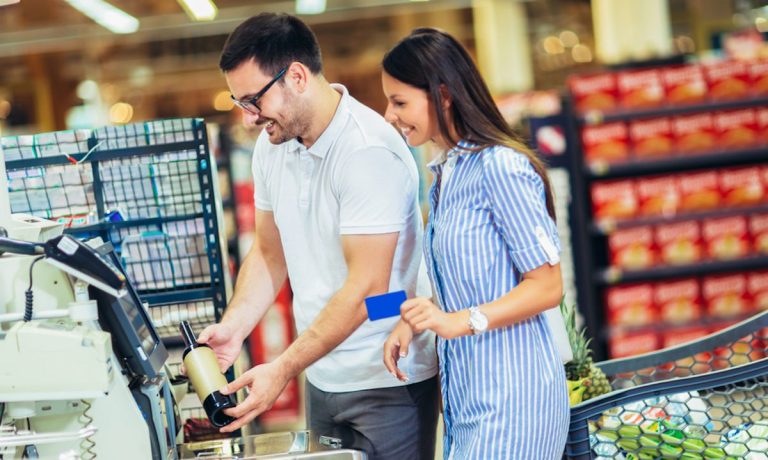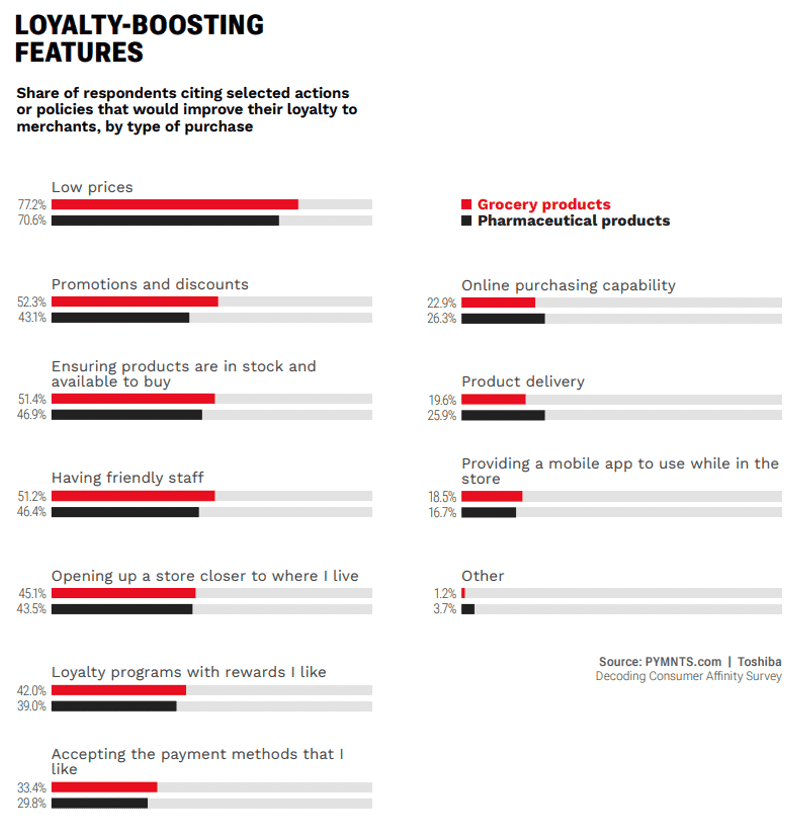
Economic uncertainty is pressuring grocers to pull back on in-store retail technology.
Amazon Fresh, which introduced its Just Walk Out system at its newest stores (replete with computer vision and sensor technology), appears to have halted expansion. And grocers such as Wegmans and Aldi are sticking with traditional self-checkout kiosks, bypassing more cutting-edge offerings such as smart carts and other cashierless options.
While cutting back on tech spend may be a short-term solution to revenue dips, that shouldn’t mean doing away with less expensive loyalty-boosting innovations. Options such as the ability to use a mobile app within a brick-and-mortar location meets customer demand for improved in-store features without a high-cost investment.
“Decoding Consumer Affinity: The Customer Loyalty to Merchants Survey 2022,” a PYMNTS and Toshiba collaboration, suggested higher-priced innovations may not even top shoppers’ lists of loyalty-boosting features.

The sizable share of customers shopping in stores monthly — as well as high consumer interest in promotions, discounts and rewards — represents an opportunity for grocers to boost loyalty through brick-and-mortar tech enhancements. Rather than taking an all-or-nothing approach, budget-minded grocers can explore innovations on a smaller scale without making bigger investments in technology such as smart carts.
To accommodate consumers’ tighter budgets while maintaining loyalty, grocery chains Stop & Shop and Save A Lot last month announced their Flashfood digital marketplace. Aimed at customers seeking discounts, the program allows shoppers to search for nearby participating stores selling food that is marked down as it nears its best-by date.
Other grocers, such as Kroger, are looking to cement customer loyalty by using shopper data to drive relevant promotions in stores. This strategy is in line with PYMNTS research that found 74% of surveyed grocers think consumers would switch merchants to access digital coupons and similar types of rewards.
In an interview with PYMNTS, Barbara Connors, vice president of commercial insights at 84.51°, the marketing insights subsidiary of Kroger, explained the emphasis on in-store promotions for budget-conscious shoppers.
“We know that very price sensitive customers are those that have lower engagement with eCommerce and are lower on the adoption curve, and those are the customers that are most likely to go into a store,” she said. “And one of the reasons is because they are looking for sales, deals and coupons, and it is easier for them to do that in-store than online.”
Another option for grocers to shore up loyalty is a third-party partnership with a tech provider, such as the commerce platform Chicory, which enables recipes to become shoppable. Yuni Sameshima, CEO and co-founder of Chicory, said in a PYMNTS interview that the secret to successful contextual commerce integrations is simplicity.
“In the past, we’ve created new products based off of a lot of data and machine learning, trying to figure out the right algorithms to reach the right people,” he said. “But ultimately, when things get difficult or inflation hits or recession is coming, the products that have worked well for us have been the ones with the most simple premise.”
As grocers continue to feel the pinch of consumers’ cost-cutting, they too are rethinking their “nice to haves” for the sake of short-term profitability. However, completely discarding customer-facing innovation could come at the cost of loyalty. Instead, grocers can explore varying levels of technology investments to fit their budgets.